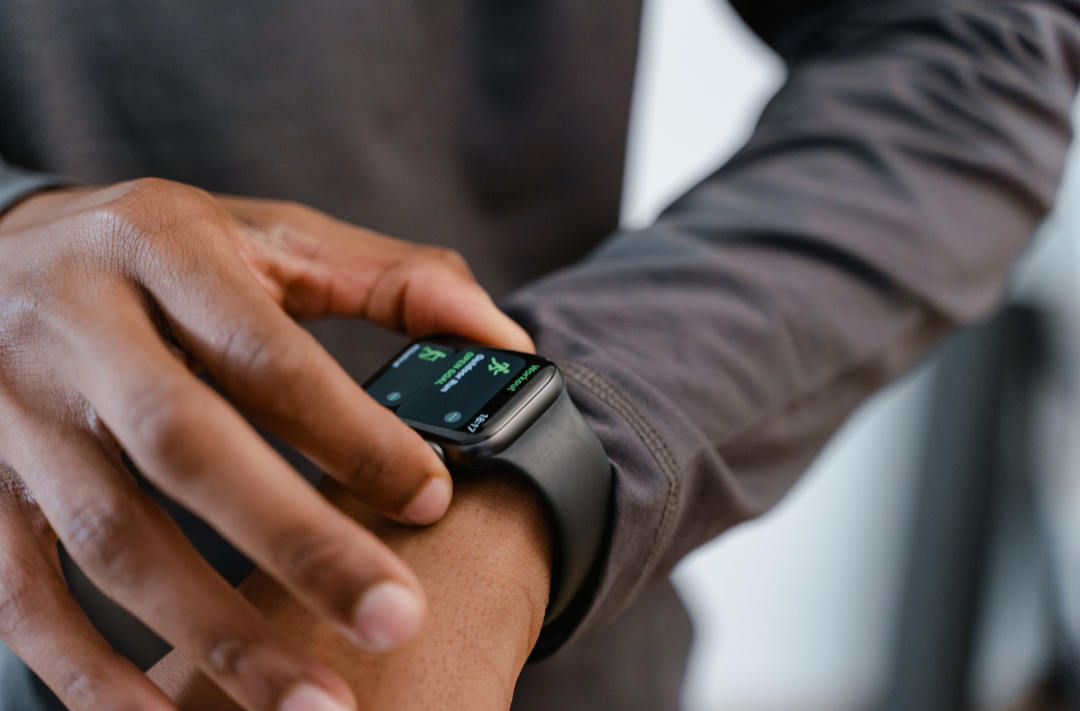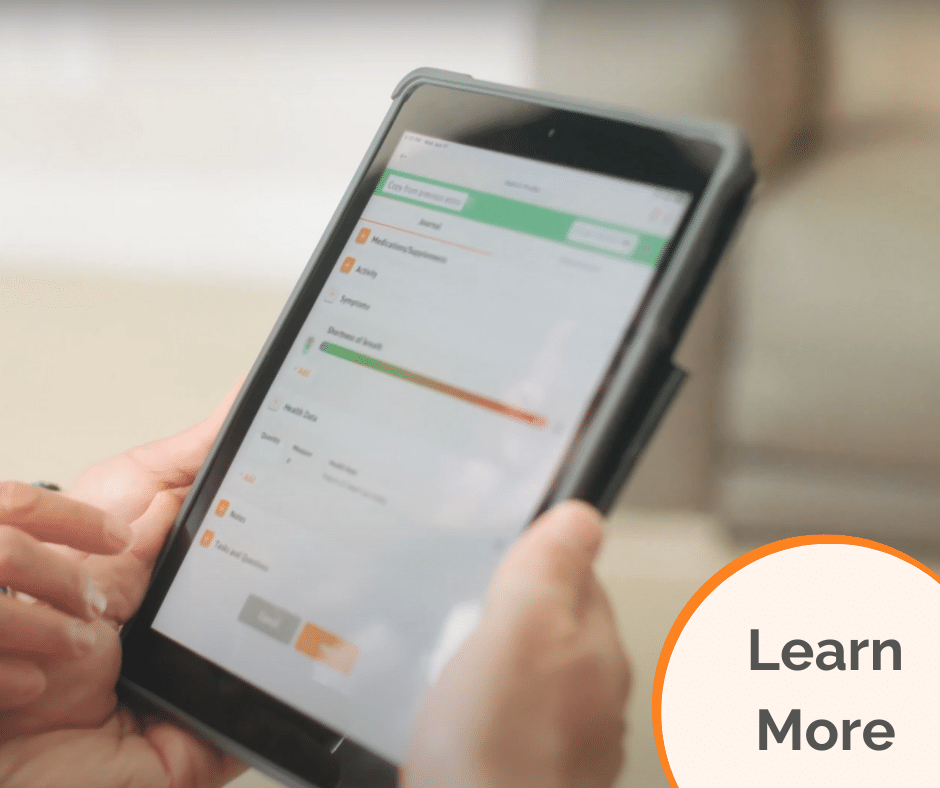Top Five Digital Health Technology Trends
Technology has a significant impact on the way individuals take care of their health. Technology has made health tools accessible to anyone with a digital device and internet connection.
Digital transformation has had a positive impact on productivity. It has also enabled healthcare systems to gain new insights and better understand diagnoses and treatments (Built In). However, digital health tools are not limited to healthcare systems. These tools can also encourage and empower individuals to take control of their health.
Digital healthcare has transformed people into conscious individuals ready to advocate for themselves and take steps to improve their health. Technological trends change as businesses continue to innovate and new products become available. It is important to stay on top of trends to better understand what technology is available and how to advocate for yourself.
The current top five digital health technology trends are telehealth, digital health apps, wearables, artificial intelligence, and privacy and security.
1. TelehealthA trend that has become increasingly popular in health care is telehealth. Telehealth is also called e-health or m-health. It provides health services and information remotely, using communication technology (Alberta Health Services; Mayo Clinic).
Communication technologies may include computers, mobile devices, and applications (apps) (Mayo Clinic). Telehealth allows individuals to stay home and receive care without an in-person clinic visit (HRSA).
The term telehealth encompasses different healthcare options, such as (Mayo Clinic; HRSA):
- Remote monitoring of symptoms through a medical device
- Ordering medication or testing supplies online
- Attending live virtual appointments with your doctor
- Messaging your doctor via email or a secure platform
- Checking on laboratory or test results online
- Physical therapy and occupational therapy
67% of people used telehealth in the past year in the U.S (J.D Power). Telehealth usage for office visits increased by 78 times in April 2021 due to the COVID-19 pandemic. (McKinsley & Company). Telehealth helped limit the spread of COVID-19 by decreasing physical contact. It also reduced travel and wait times and increased access to specialists (HRSA).
Since then, telehealth has stabilized but is still used 38 times more than before the COVID-19 pandemic. Telehealth use is expected to increase. This is due to the development of new technologies and the growing popularity of virtual health care.
Digital patient care is evolving rapidly, particularly through hybrid healthcare models. Access, outcomes and affordability are key priorities in these models (McKinsley & Company).

2. Digital Health Apps
Another digital health technology trend closely related to telehealth is digital health apps. Digital health apps, like the Zamplo App, are one of the most popular digital health tools. There is a high demand for health apps. Hundreds of thousands of these apps are available and used worldwide.
People are downloading and using health apps for a reason. Many people feel inspired to explore new technologies. Additionally, some are motivated to lead healthier lives using health applications.
In 2020, more than 90,000 new health apps were released. Today, over 350,000 digital health apps can be downloaded from app stores (Mobi Health News).
Different types of health apps serve a variety of purposes. These apps can be physical health-oriented, such as tracking daily steps and workouts (Deloitte). Other apps are mental health-oriented with a focus on wellness (WebMD). Health apps may also include telehealth apps that support patient care (Medium).
Common health app categories include (Statista; CMAH):
- Remote monitoring
- Diagnostic apps
- Medical condition management
- Mental health management
- Remote consultation
- Patient health record
- Fitness tracking
- Nutrition and weight loss
- Reminders and alerts
- Medical compliance
These apps are predicted to become increasingly popular among the general population. They allow people to better care for their mental health and well-being (Deloitte).
3. Wearables
Wearables empower people to focus on preventing, maintaining, and better understanding their health information (Digital Authority Partners). Wearable technology refers to hands-free electronic accessories that send and receive data to smart devices through the internet (Investopedia). Wearables can measure and transmit data such as vital signs, steps, calories, sleep time and quality (Lifewire).
Healthcare companies have focused on developing smart devices that people can easily wear to keep track of their health. More than 80% of individuals are interested in wearing wearable technology (Insider Intelligence).
The most popular wearable devices include (HP; Lifewire; Insider Intelligence):
- Smartwatches: Like fitness trackers, these devices are worn on the wrist, allowing people to track activity metrics. Smartwatches also enable people to text, call, and send emails.
- Smart Rings: With smart rings, people can also track activity metrics, such as vital signs and sleep quality.
- Smart clothing: This type of clothing can be available as socks, shoes, activewear, and casual wear. They use textiles that are enhanced with technology and track activity metrics.
- Advanced medical technology: This technology can measure and send specific medical information where needed. This includes wearable electrocardiograms (ECG) and blood pressure monitors.
The market for health wearables is expected to reach more than $27 million by 2023 (Digital Authority Partners).

4. Artificial Intelligence (AI)
Artificial Intelligence (AI) plays a critical part in the development and innovation of technology in the digital health industry. AI is a type of computer science. It focuses on building machines and systems that can replicate human intelligence when performing tasks (Built In).
Common AI systems include smart assistants like Siri from Apple, Alexa from Amazon, and Google's Assistant (Built In). Smart assistants are AI activated by voice commands. They are found in various smart devices, including phones and tablets. They can do tasks or answer questions, similar to how humans do (Lifewire).
Smart assistants can help people with a wide range of tasks, including caring for their health. For example, people can ask these assistants to schedule medical appointments and send medication reminders (Mindfields).
Smart assistants have become popular in health technology over the past two years. They can be voice-activated or accessed through a text chatbot. Virtual chatbot nurse assistants have helped people with chronic conditions to monitor and manage their symptoms (Medical Device Network).
Recently, AI technology has been used in dermatology health apps. These apps help people evaluate and monitor changes in their skin. People can upload pictures to the dermatology app. AI will compare the images to photos of skin conditions. It will then provide a risk assessment and suggest if a person should visit a doctor for a second opinion (MUO).
AI developments are shifting focus. Instead of focusing solely on solutions for healthcare professionals, AI technology is being developed for health solutions centered around individuals.
AI developments are enabling people to take control of their health data. This is possible from any location without relying on a healthcare system. AI in the healthcare market is expected to reach over $34 billion by 2025 (Business Wire).
5. Privacy and Security
As digital technology adoption has increased, so has the quantity of data individuals generate. In health technology, data generated includes personally identifiable information such as someone's name, address, or email (TechTarget). Organizations have access to this information, which they use to better understand pain points and unmet needs.
Health technology organizations use insights to develop new products and services. These insights can also personalize advertising and marketing (McKinsley & Company).
Healthcare is becoming more digital. This includes collecting health information via apps, wearables, and AI. However, this shift raises the risk of privacy and security breaches.
More than 550 organizations experienced a data break in 2021. Forty million people in the U.S. were affected by security breaches (The Verge).
69% of people worldwide say they are more concerned than ever about their online privacy (Howarth). Over the past years, people have continued to demand data privacy and have questions about their information (Deloitte):
- Who has access to my information?
- How is my information used?
- What are companies doing to protect my information
People are becoming more interested in companies, products, and services that use multifactor authentication. This decreases the risk of a cyber-attack. Multifactor authentication is a method of verification. It requires people to provide two or more factors to log in to a product or service (onelogin).

People are also looking to privacy policies and ensuring they have control over data ownership (McKinsley & Company). People can ensure that their personal data is not sold or shared with third parties.
Business safety and security requirements will likely increase as individuals push for privacy. Due to this, health organizations have begun to prioritize privacy and security above all else (Titus).
The Future of Digital Health
These are the top five digital health technology trends currently found in digital health. Virtual care and telehealth are expected to become increasingly accessible and affordable as these trends evolve. More digital health apps, wearable types, and person-centered solutions will continue to be developed with the support of AI. Lastly, Privacy and security are important considerations when purchasing digital health technology or services.
It is key to make more informed decisions and learn how to advocate for yourself by understanding these health technology trends.
Are you interested in getting started with a secure digital health app to track, analyze, and share your health journey? Learn about the Zamplo app and sign up for free today.
Share this
You May Also Like
These Related Stories
-2.png?width=940&height=788&name=Updated%20Blog%20Images%20(Blog%20listing)-2.png)
Connected Health Solutions: What Is a Connected Health Platform?
%20(2).png?width=940&height=788&name=Updated%20Blog%20Images%20(Blog%20listing)%20(2).png)
Benefits of A Connected Health Platform Integration
-Oct-16-2023-07-15-56-6931-PM.png?width=940&height=788&name=Updated%20Blog%20Images%20(Blog%20listing)-Oct-16-2023-07-15-56-6931-PM.png)
.png?width=500&height=200&name=Zamplo%20Logo%20(1).png)


%20(2).png?width=940&name=Blogs%20Product%20Image%20(940%20%C3%97%20200%20px)%20(2).png)

No Comments Yet
Let us know what you think